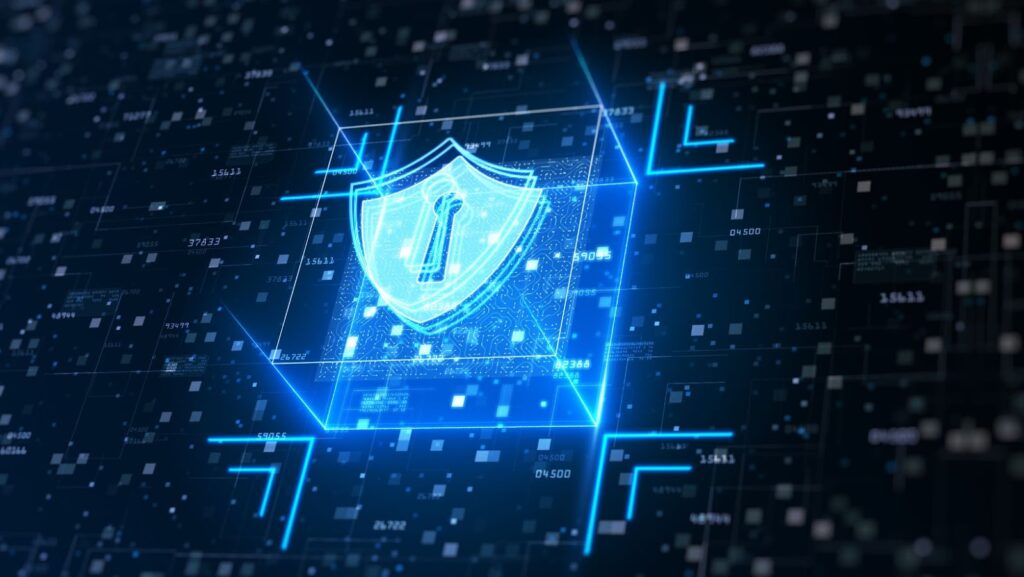The world is changing quickly and the threats posed by cyber-attacks, data breaches, and phishing attacks are also on the rise. To protect against these modern threats and remain competitive in today’s digital age, companies must stay ahead of the curve and be diligent about updating their security posture.
Anjuna, a prominent security software solution provider and enterprise IT solutions provider, understands the importance of staying vigilant against online threats and has recently announced a new strategy to provide customers with enhanced security measures. Anjuna CEO Kenneth Snyder believes that by innovating rapidly to keep up with evolving cyber threats while maintaining a superior user experience, they can help protect their customers and create a competitive advantage in an increasingly competitive digital landscape.
The security perimeter should shift from box to asset, says Anjuna CEO
In a recent interview, Anjuna CEO, Jason Crissman said, “The security perimeter should shift from the box to the asset”. This statement has highlighted improving safety and security measures in the current digital landscape.
Understanding why this shift is necessary and how it can help protect against modern threats is important. So let’s get into the details.
What is the Security Perimeter?
The security perimeter is the boundary between a secure, trusted internal network and an untrusted external network. Traditionally, the security perimeter has been established around the organisational perimeter, such as a firewall or other hardware device. As organisations move to the cloud and embrace remote workforces, this “box-based” security perimeter is no longer effective in protecting resources, data and users.
To keep networks secure and reliable in today’s complex IT environment, organisations must shift their approach from box-based (hardware) security to asset-based (security services, software & policy) security. Asset-based security focuses on understanding what assets are on the network and prioritising their protection. This involves implementing an intelligence layer in which automated tools detect and alert on suspicious activity via user behaviour analytics and anomaly detection techniques. Additionally, security policies should be implemented to ensure users who access assets have sufficient levels of authentication for access that are also subject to continual re-evaluation based on changing risk profiles. Ultimately, this helps ensure only authorised access is granted and maintained per business needs throughout their lifecycle.

Why is the Shift Necessary?
The security perimeter must shift from the traditional box-based approach to an asset-centric one to remain effective against new and increasingly sophisticated threats. This change is necessary because traditional security focuses solely on the entire infrastructure, making it difficult for organisations to detect inroads made by attackers who use different stages of attack activity. As such, attackers can hide their activities and embed themselves within a system more easily.
By shifting to an asset-centric defence, organisations can reduce their overall attack surface area and gain visibility into existing and emerging threats. This enhanced visibility makes it easier for security teams to detect malicious behaviour early on while providing them with context-driven decisions that enable prioritisation of effort towards eliminating any discovered threats.
Asset-centric security also strengthens an organisation’s defences through increased employee education and security awareness training, which helps cultivate a continual improvement culture. By ensuring each staff member clearly understands what constitutes a threat, why data needs protecting and how their behaviour impacts all levels of security, organisations are better equipped for managing long-term risks – increasing organisational resilience in the process.

Anjuna CEO on Why the Shift is Necessary
The security perimeter of most organisations is in dire need of an update, according to Anjuna CEO Stephen Thomas. Thomas has suggested a shift from box-level security to asset-level security to protect against modern threats.
This article will examine why Thomas believes this shift is necessary and how it could benefit your organisation.
Anjuna’s Perspective on the Shift
Anjuna CEO, Nathan Boman believes that moving away from a reliance on traditional infrastructure and toward a dynamic security model is the best course of action for organisations to protect themselves in today’s modern threat landscape.
Much of the focus has been on using the cloud to improve security, but Boman argues that traditional methods aren’t enough anymore. He explains, “We are living in an era where change is happening at an accelerated pace and every organisation needs to constantly adapt their security strategies to remain ahead of new threats. The status quo just doesn’t cut it anymore. We must shift to a more agile model that allows us to quickly address emerging threats and adapt our defences accordingly.”
Boman cites several reasons why this shift is necessary, such as:
- As attack techniques become more sophisticated, organisations need forward thinking strategies for protecting valuable data and preventing attacks before they occur.
- Agile models enable organisations to build potential solutions by incorporating feedback from multiple sources into their strategy.
- Dynamic security models can identify changes quickly and act accordingly, reducing response times and decreasing the risk of potential damages.
- Organisations can employ shifts in other software or hardware cycles that require deprovisioning old assets and provisioning new assets quickly with minimal disruption or downtime.
For these reasons, Anjuna helps organisations migrate towards cloud computing solutions that enable microservices architecture with dynamic security models automatically applied across containers to enable rapid scalability without sacrificing security assurance or compliance policies. Anjuna also provides advanced threat protection capabilities at scale wherever it’s needed by leveraging AI analytics engines combined with human intelligence that help customers stay ahead of both existing and emerging threats.

Anjuna’s Recommendations for Implementing the Shift
As the world evolves, so do cultures, businesses, and security threats. To protect against modern and ever-changing threats, Anjuna’s CEO emphasises that there is an urgent need for organisations to make the shift away from traditional cyber security models.
The following are Anjuna’s recommendations for organisations on how to implement such a shift:
1. Implement an end-to-end cybersecurity strategy across all devices and networks. This should include comprehensive plans for network segmentation, identity access and application whitelisting, and encryption measures like enterprise private keys and public key infrastructures (PKIs).
2. Incorporate cloud security solutions including data loss prevention (DLP) systems, virus protection software, web application firewalls (WAFs), multi-factor authentication (MFA) protocols and encrypted data storage solutions.
3. Remove legacy systems by upgrading outdated components or adopting newer technologies to address common threats like malicious mobile apps or phishing attacks.
4. Introduce a Zero-Trust approach which requires identity verification and access privilege management during every single step of a user’s session—even internal users accessing resources from within the organisation’s environment. This will help ensure that suspicious activity will be detected much sooner than through traditional monitoring alone.
5. Utilise behaviour analytics tools like machine learning (ML) algorithms or artificial intelligence (AI) strategies to detect deviations or abnormalities in user behaviour much more quickly than manual methods can deliver—allowing organisations to take quick mitigation action against suspicious activity in addition to long term preventative measures currently implemented within the network infrastructure itself.
6. Implement regular vulnerability assessments across all systems in order identify attack surfaces exposed by misconfigured hardware or out of date software services which can be exploited by external threats actors in cyberspace seeking easy access into corporate environments advanced cloud computing abilities should not create any obstacles here either—instead they should be embraced as new opportunities for better detection analytics combined with auto remediation capabilities fending off further exploitation efforts at greatly reduced speed of alert reaction missed window times when compared with traditional applications models who might lack this sort of integrated advanced fast response mediation feature sets.
tags = analysts Savannah Peterson and Paul Gillin, Workers can’t get it, The perimeter isn’t at the box, anjuna security cloud 30m insight partnersrileysiliconangle, confidential cloud 30m insight partnersrileysiliconangle


More Stories
How Effective is a Drug Detox Center in Treating Prescription Drug Addiction?
Effective and Persuasive Ways to Give an Example in an Essay
Popular Types of Online Casino Bonuses In Malaysia